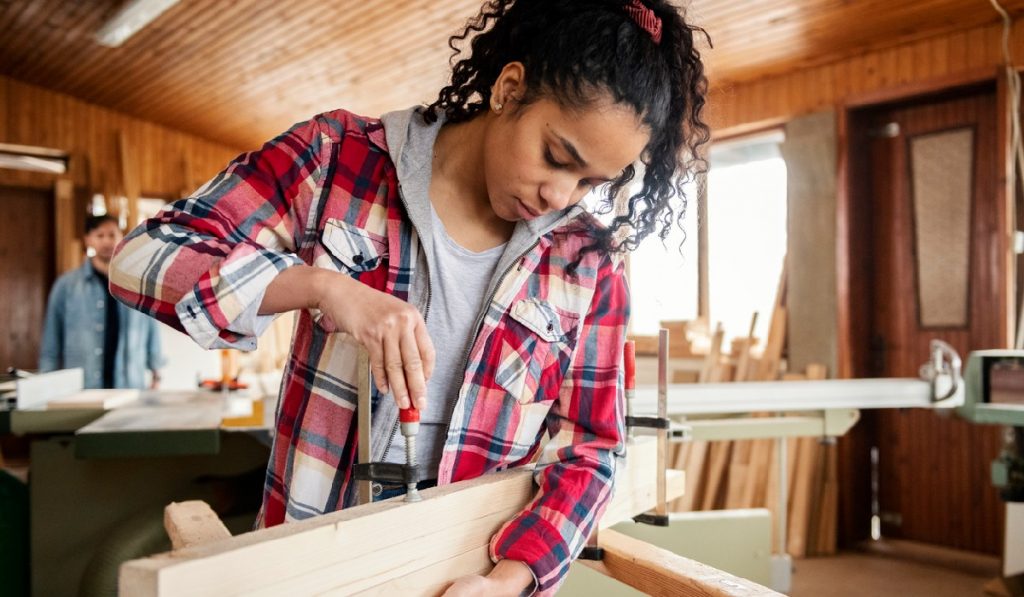Do You Need To Use Clamps When Completing Projects?

INTRODUCTION
When working with materials like wood, it’s sometimes necessary to use clamps to hold pieces in place while you work. This is especially true when gluing or sanding, as you don’t want them to move around and cause an uneven or messy finish.
There are all sorts of different clamps out there, and each kind has a specific purpose. This begs the question — do you need to use clamps when completing projects? The answer is simple — it depends.
If you’re working with wood, then the answer is most likely yes. Woodworking clamps are essential for keeping your workpiece steady while you drill, saw, or sand it. Without a clamp, your workpiece is likely to move around, which could ruin your entire project.
WHAT KINDS OF CLAMPS ARE THERE?
There are several different types of woodworking clamps, including C-clamps, F-clamps, bar clamps, and pipe clamps. Each type of clamp has its strengths and weaknesses, so you’ll need to choose the right clamp for the job at hand.
For example, C-clamps are great for holding workpieces in place while you work on them, but they can be a bit tricky to use. F-clamps, on the other hand, are much easier to use, but they don’t provide as much holding power as C-clamps.
So, which type of clamp should you use? Again, it depends on the project you’re working on. If you need a lot of holding power, then go with a C-clamp. If you don’t need as much holding power, then an F-clamp should be just fine.
No matter which type of clamp you choose, make sure to use it properly. Improper use can damage your workpiece or even lead to injury, so take the time to read the instructions that come with your clamp and be sure to use it safely.
KEEP THIS IN MIND WHEN WORKING ON PROJECTS
Completing projects without clamps can be difficult and time-consuming
When you’re working on a project, clamps can be a lifesaver. They help to keep your workpieces in place while you’re working on them, which can make the difference between a successful project and a complete disaster.
There are a few ways to complete projects without clamps, but these are generally more difficult and time-consuming. For example, if you’re gluing two pieces of wood together, you’ll need to hold them in place while the glue dries. This can be difficult to do without clamps, and if you’re not careful, your project can end up looking wonky.
Another option is to use tape instead of clamps. This can be effective, but it’s not always as secure as using clamps. Plus, it can be a bit messy if you’re not careful.
If you’re working on a project that doesn’t require precise alignment, you might be able to get away with using weights instead of clamps. This can be a bit tricky, and it’s not always reliable, but it’s worth a shot if you’re in a pinch.
So, while you technically can complete projects without clamps, it’s generally more difficult and time-consuming. If you have the option, we recommend using clamps to make your life a whole lot easier.
If you’re unsure if you need to use clamps, ask an expert
If you’re unsure if you need to use clamps on a project, it’s always a good idea to consult with an expert. Clamps can be extremely helpful when working with wood, metal, or other materials, as they hold everything in place while you work. Using too many clamps, though, can actually make your project harder to complete, so it’s important to use them sparingly and only when absolutely necessary.
Let’s say you’re building a simple wooden box, for example. You’ll need to use clamps to attach the sides of the box together, but you won’t need to use them for the top or the bottom. If you’re building a more complex project, though, such as a piece of furniture, you’ll likely need to use clamps in several different places to keep everything secure.
When in doubt, it’s always smart to ask an expert or consult a how-to guide before beginning your project. That way, you can be sure you’re using clamps in the most effective way possible.
CONCLUSION
There you have it! Whether or not you need to use clamps when completing a project is entirely dependent on the project itself. If you’re working with small, delicate pieces that need to be perfectly aligned, then clamps are definitely the way to go. If you’re working on a larger project that doesn’t require such precision, though, you can probably get away with not using clamps. Ultimately, it’s up to you to decide which is right for your project.
